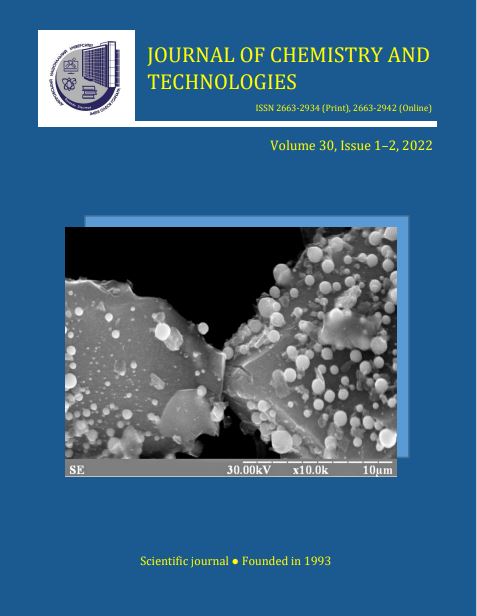SIMULATION OF THE FLOW OF VISCOUS-PLASTIC BAROTROPIC COMPRESSIBLE MATERIAL IN CHANNELS OF COMPLEX GEOMETRY
DOI:
https://doi.org/10.15421/jchemtech.v30i2.255960Keywords:
рідина, в'язко-пластична, баратропна, течія, модель, канал.Abstract
In this article we observed the modeling the movement of viscous-plastic material, compressed with indicators that depend on the pressure in the channels of complex geometry of technological equipment.
As the materia we chose the Bingham (viscous-plastic) fluids with two constant parameters - viscosity and pressure threshold, which depend on pressure. We consider the flow in the flat channel. The motion of the boundaries is assumed to be purely longitudinal, and the flow field is not longitudinal. The transverse component of the velocity appears due to the dependence of the parameters of the rheological model on pressure. Flow simulation was carried out in two stages. At the first stage, we considered the rheological model of the flow of Bingham material, but without compression. In the second stage, we studied the influence of barotropic compression factor. The superposition method was used when considering the flow model.
According to the results of the simulation, we obtained a flow model of nonclassical Bingham material, which can be extended to materials that are compressed and satisfy the conditions of barotropicity. Within the framework of the proposed model, we obtained the equations of zero and the second approximation to determine the characteristics of the Bingham flow in a flat channel. The obtained formulas allow to determine the velocity of the quasi-solid core, which is determined by the degree of deviation of the viscosity and shear threshold, and the average value of the inverse viscosity at the same pressure range. The speed of a solid core depends on both the sum and the difference in speed at the channel boundaries. The compressibility of the viscous-plastic material is shown in terms of pressure and velocity difference at the channel boundaries.
It is established that for long channels in the zero approximation the compressibility does not have a significant effect on the flow, but has an effect only in the second approximation, while the average pressure gradient remains a finite value, ie the pressure difference at the channel ends becomes infinite. For barotropic compressible material, this means that if the pressure at one end of the channel becomes infinite, the density of the material at this end must also become infinite. Thus, when the value of pressure tends to infinity, the value of density remains a finite value.
Mathematical description of the flow of viscous-plastic baratropic fluid in the channels of complex geometry of technological equipment allows to establish the dependence of viscosity and limit value of shear stress on pressure with the maximum generalization of parameters.
Downloads
Published
Issue
Section
License
Copyright (c) 2022 Oles Honchar Dnipro National University

This work is licensed under a Creative Commons Attribution 4.0 International License.
- Authors reserve the right of attribution for the submitted manuscript, while transferring to the Journal the right to publish the article under the Creative Commons Attribution License. This license allows free distribution of the published work under the condition of proper attribution of the original authors and the initial publication source (i.e. the Journal)
- Authors have the right to enter into separate agreements for additional non-exclusive distribution of the work in the form it was published in the Journal (such as publishing the article on the institutional website or as a part of a monograph), provided the original publication in this Journal is properly referenced
- The Journal allows and encourages online publication of the manuscripts (such as on personal web pages), even when such a manuscript is still under editorial consideration, since it allows for a productive scientific discussion and better citation dynamics (see The Effect of Open Access).


